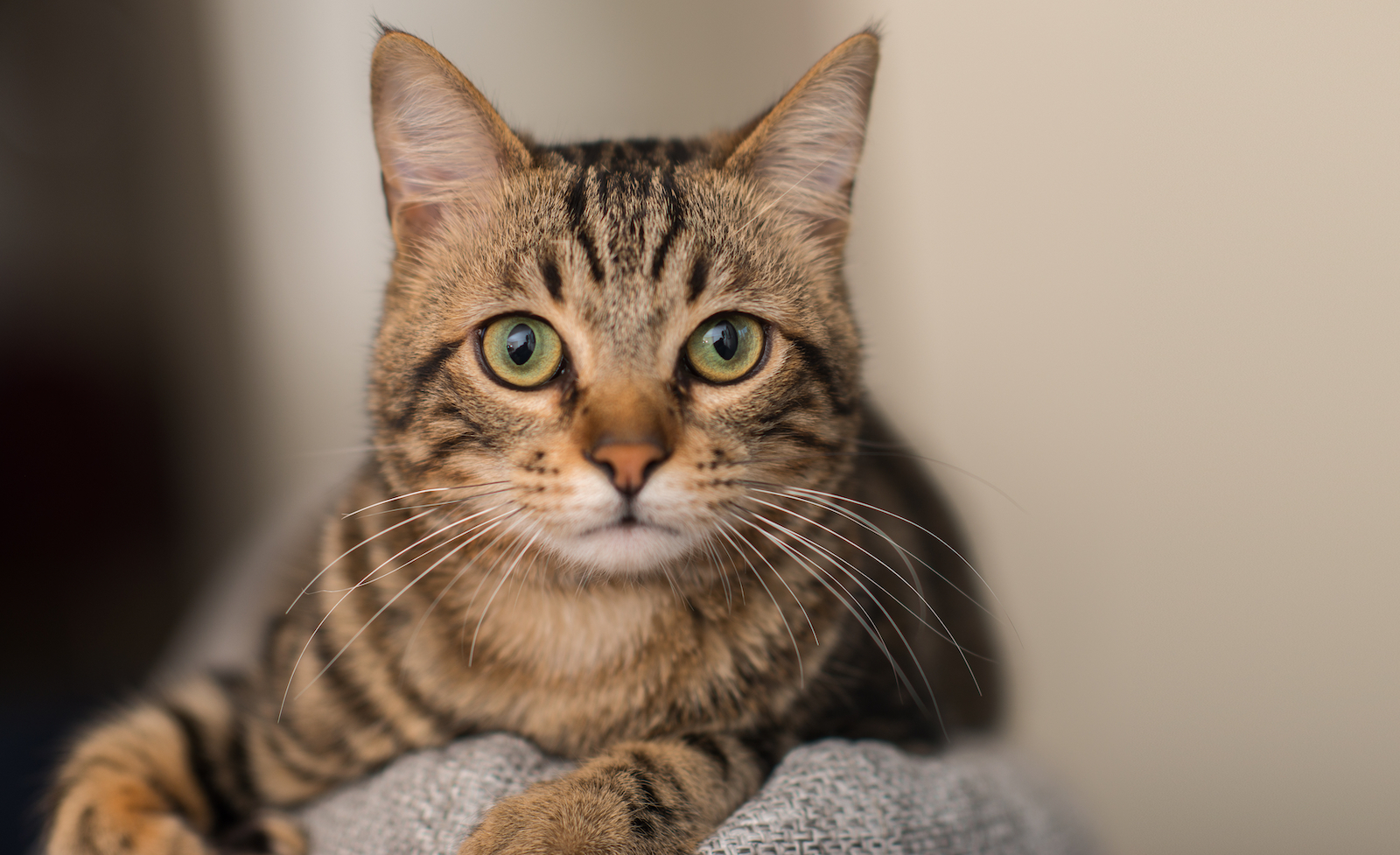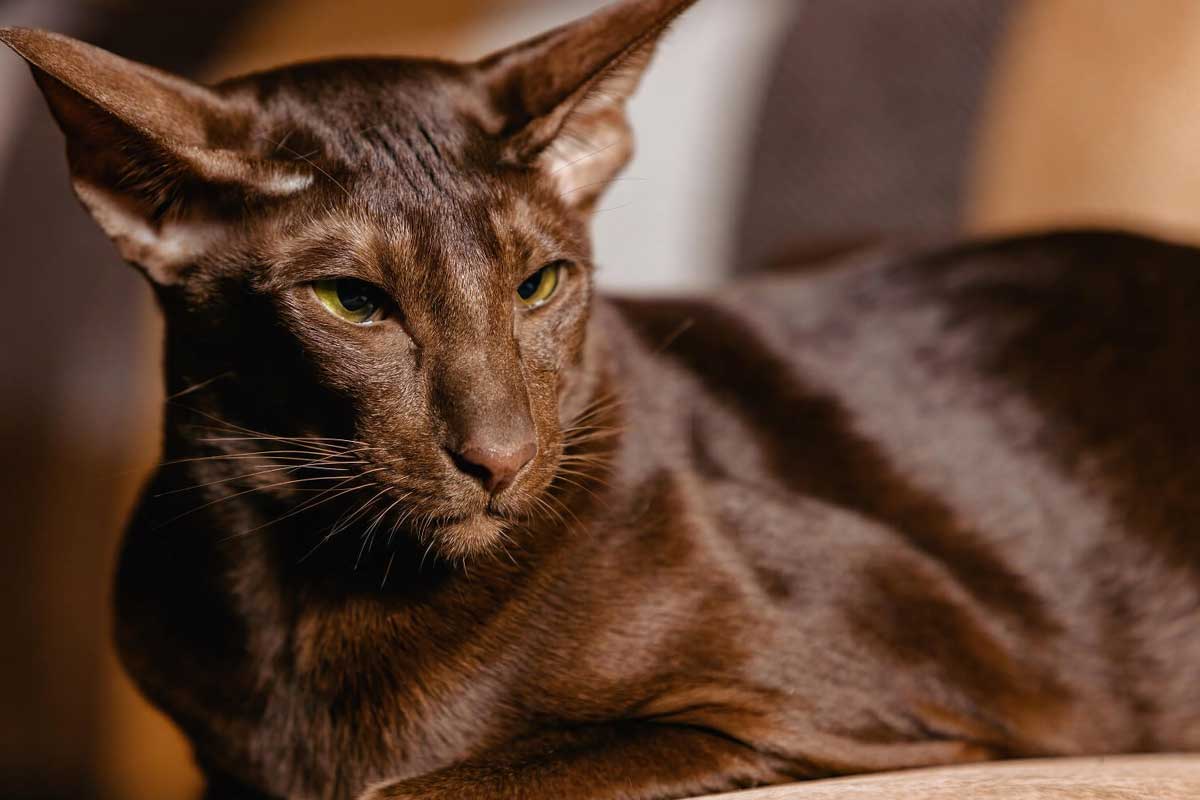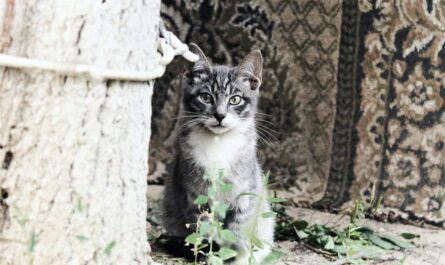Whiskers twitching, playful pounces across the living room floor – for weeks, Luna, a sleek black cat with emerald eyes, seemed the picture of perfect health. Then, a subtle change. A lingering lethargy crept in, her playful spirit dimming. Appetite dwindled, replaced by a persistent fever. Confused and worried, you rushed Luna to the vet, embarking on a confusing odyssey of tests and consultations. After a battery of examinations, a name emerged, a name that sent shivers down your spine – Feline Infectious Peritonitis (FIP), commonly Infectious Peritonitis in cats.
FIP, an elusive and enigmatic illness, can leave even the most seasoned cat owners feeling helpless. This article delves into the complexities of FIP, offering a comprehensive exploration of this challenging feline disease. We’ll unravel the causes, explore the diverse ways FIP can manifest, and navigate the often frustrating path to diagnosis. We’ll also shed light on the current treatment options and the ongoing research efforts striving to conquer this devastating illness. While the journey to a definitive cure continues, understanding FIP empowers you to advocate for your feline friends and provide them with the best possible care.
A Web of Intricacy: Understanding the Causes of Feline Infectious Peritonitis
FIP might seem like a mysterious visitor lurking in the shadows, but the origins of the disease lie with a surprisingly common culprit – feline coronaviruses (FCoVs). These viruses are widespread, infecting up to 80% of cats worldwide! In most cases, they cause nothing more than mild, transient GI upset that goes unnoticed. However, in a small percentage of cats, a sinister transformation occurs.
Imagine a well-behaved house guest suddenly turning into a mischievous prankster. That’s essentially what happens with FIP. A mutation within a specific strain of Feline Coronavirus triggers a dark side, transforming it into a highly aggressive form that attacks the cat’s immune system. The exact reason for this mutation and why it only affects a select group of felines remains a subject of ongoing scientific exploration.
Why some cats are more susceptible to FIP than others is another layer of complexity in this intricate web. Age seems to play a role, with younger kittens and senior cats exhibiting a higher risk. A cat’s overall immune system health is also a factor, with weakened immunity making them more vulnerable. Additionally, some researchers believe there might be a genetic predisposition in certain breeds.
Here’s a comforting fact: despite the unsettling name, direct cat-to-cat transmission of FIP is rare. The bigger concern lies with the environment. The mutated virus can shed in an infected cat’s feces and remain infectious for weeks in carpets, litter boxes, and other surfaces. This environmental persistence highlights the importance of maintaining a clean and hygienic environment for your feline companions.
A Chameleon in the Cattery: The Many Faces of FIP Symptoms
Feline infectious peritonitis (FIP) can be a frustrating foe for both cat owners and veterinarians alike. Unlike some illnesses with telltale signs, FIP’s symptoms can be maddeningly vague and varied, making early diagnosis a real challenge. It’s like a chameleon, blending into the background and mimicking other feline health concerns. But fear not, with some knowledge and awareness, we can be better equipped to navigate this tricky terrain.
The Elusive Nature of FIP: A Diagnostic Puzzle
One of the biggest hurdles in dealing with FIP is the lack of a single, specific symptom. This can make pinpointing the culprit promptly quite difficult. FIP can manifest in a wide range of ways, often mimicking other feline illnesses. Because of this, vigilance and a keen eye for even subtle changes in your cat’s behavior are crucial.
The “Wet” and “Dry” Forms: Two Sides of the Same Coin
FIP can present itself in two main forms: the “effusive” form, also known as the “wet” form, and the “non-effusive” form, or the “dry” form.
-
The Wet Form: This form is characterized by the accumulation of fluid in the abdomen (causing a swollen belly) or the chest cavity (leading to difficulty breathing). These fluid buildups can put pressure on internal organs and cause discomfort for your cat.
-
The Dry Form: This form is less dramatic in terms of fluid buildup, but it can involve a variety of organs. Some cats might experience weight loss, recurring fever, lethargy, or a lack of appetite. There might also be neurological signs, like seizures or difficulty walking.
It’s important to remember that these are just general descriptions, and the specific symptoms can vary greatly from cat to cat.
A Symphony of Vague Signs: Listening to the Feline Orchestra
FIP’s symptoms can be like an orchestra playing a confusing melody. There’s no clear, singular tune, but rather a collection of seemingly unrelated notes. These symptoms, such as weight loss, fever, lethargy, and loss of appetite, are common to many other feline illnesses. This makes it even more challenging to diagnose FIP definitively.
Here’s where a visit to your veterinarian becomes critical. By sharing any observed changes in your cat’s behavior or health, along with a detailed medical history, you can help your veterinarian paint a more complete picture and explore all potential causes.
Kitten Concerns: A Race Against Time
Unfortunately, FIP can be particularly aggressive in young kittens. This is because their immune systems are still developing, making them more susceptible to the virus’s effects. If you have a kitten experiencing any of the symptoms mentioned earlier, especially if they progress rapidly, seeking veterinary attention immediately is crucial.
Early intervention can make a significant difference in a kitten’s fight against FIP. By being observant and proactive, you can become your kitten’s best advocate and ensure they receive the timely medical care they need.
Unveiling the Mystery: Diagnosis and Challenges of FIP
Feline Infectious Peritonitis (FIP) can be a puzzling condition for both cat owners and veterinarians alike. While the frustration of an uncertain diagnosis is understandable, there’s hope. Here, we’ll delve into the world of FIP diagnosis, exploring the tools available to veterinary professionals and the reasons why pinpointing FIP can sometimes be like piecing together a mystery.
The Importance of a Veterinary Team: Your Partner in Pet Care
Feline Infectious Peritonitis is a complex disease, and diagnosing it accurately requires the expertise of a veterinarian. At-home tests simply aren’t reliable for FIP. Your veterinarian is your partner in pet care, and they have the knowledge and experience to navigate the diagnostic process effectively. They will work with you to gather information, conduct examinations, and interpret test results to get a clearer picture of your cat’s health.
A Multifaceted Approach: Unveiling the Pieces of the Puzzle
Diagnosing FIP often involves a multifaceted approach, utilizing various tools to paint a more complete picture. Here are some of the tools your veterinarian might use:
- Blood Tests: While no single blood test can definitively diagnose FIP, certain bloodwork can reveal abnormalities that might suggest its presence. These tests can also help rule out other potential explanations for your cat’s symptoms.
- Imaging Techniques: X-rays or ultrasounds can be used to visualize your cat’s internal organs, potentially revealing fluid buildup in the abdomen or chest cavity, a common sign of FIP.
- Exploratory Surgery (in some cases): In some situations, your veterinarian might recommend exploratory surgery to obtain tissue samples directly from affected organs. These samples can then be analyzed for signs of FIP.
It’s important to remember: These tests provide valuable clues, but they may not always offer a definitive answer.
The Shadow of Uncertainty: Why a Single Test Isn’t Enough
Unfortunately, there isn’t a single, foolproof test for FIP. This lack of a gold-standard test makes diagnosis challenging. Veterinarians often rely on a combination of clinical signs, physical examination findings, and the results of various tests to arrive at a diagnosis, sometimes with a degree of uncertainty.
While this uncertainty can be frustrating, it’s important to remember that your veterinarian is using their expertise and experience to make the most accurate diagnosis possible, given the limitations of the current diagnostic tools.
Ruling Out Other Possibilities: Looking at the Bigger Picture
Several other feline diseases can mimic the symptoms of FIP. To reach an accurate diagnosis, your veterinarian will need to rule out these possibilities first. This might involve additional tests specific to those other diseases.
By systematically eliminating other explanations for your cat’s symptoms, your veterinarian can build a stronger case for, or against, a diagnosis of FIP.
Remember, open communication with your veterinarian is key. Don’t hesitate to ask questions and voice your concerns throughout the diagnostic process. Together, you can navigate the complexities of FIP diagnosis and create the best course of action for your feline friend.
A Beacon of Hope: Treatment Options and Managing FIP
Feline Infectious Peritonitis (FIP) can be a daunting diagnosis for any cat parent. While there is currently no guaranteed cure, there’s a lot we can do to manage the disease and improve your cat’s quality of life. In this section, we’ll explore the current treatment landscape, the importance of supportive care, and the exciting possibilities emerging in FIP research.
The Search for a Cure: A Journey of Discovery
Researchers worldwide are diligently working towards a definitive cure for FIP. Discoveries are constantly being made, and there’s ongoing exploration of various treatment options. It’s important to note that currently available treatments may not be a one-size-fits-all solution, and their effectiveness can vary.
Here’s the key takeaway: While a permanent cure might not be readily available yet, there are still ways to help your cat feel better and manage the symptoms of FIP.
Supportive Care is Key: Comforting Your Feline Friend
Even though there might not be a single magic bullet cure, supportive care plays a vital role in managing FIP and improving your cat’s well-being. Think of it as creating a comfort zone to help your feline companion fight the disease. Here’s what supportive care might involve:
- Pain Relief: Your veterinarian will prescribe medications to manage any pain your cat might be experiencing.
- Hydration Boost: Dehydration is a common concern in FIP cases. Providing fluids intravenously or subcutaneously (under the skin) can help keep your cat hydrated and feeling better.
- Appetite Stimulation: FIP can cause nausea and loss of appetite. There are medications and dietary adjustments that can help stimulate your cat’s appetite and encourage them to eat.
Remember, keeping your cat comfortable and supported is crucial throughout their journey with FIP.
Emerging Treatment Possibilities: A Glimpse into the Future
The fight against FIP is far from over. Researchers are actively exploring promising new avenues for treatment, including:
- Antiviral Medications: These medications target the feline coronavirus itself, potentially stopping the virus from replicating and causing further damage.
- Immunomodulatory Therapies: These therapies aim to modulate (adjust) your cat’s immune system, helping it fight off the FIP virus more effectively.
While these treatments are still under investigation, they offer a glimmer of hope for the future of FIP management.
Individualized Care Plans: Tailored Support for Every Cat
Every cat is unique, and so is their FIP journey. The specific treatment plan for your feline friend will be tailored to their individual needs. Your veterinarian will consider factors like the severity of the disease, your cat’s overall health, and their response to different medications.
By working closely with your veterinarian, you can create a personalized treatment plan that provides your cat with the best possible support and improves their quality of life.
Remember, even with a diagnosis of FIP, there is still hope. Supportive care can significantly improve your cat’s comfort, and exciting new treatment possibilities are emerging on the horizon. Never give up on your furry companion, and continue to provide them with the love and care they deserve.

Other Interesting Articles
- How to Tell if Your Cat is in Pain after Surgery: How to Help
- How to Tell If Your Cat Loves You The Most: 23 Signs
- 20 Tips On How to Comfort A Scared and Frightened Cat
- 26 Signs Your Cat Can’t Breathe: A Guide to Help It Recover
- Cat Trilling Sound: What Does It Mean, How To Handle
- Cat Chattering Sound: What Does It Mean, How To Deal With
- How to Take Care of A Kitten 2 Months Old: Tips, Guide
- How to Feed A Newborn Kitten That Won’t Eat: 19 FAQs
- How to Care for Your Cat After Spaying or Neutering
- Cat Excessive Yowling: Why Cats Yowling: What You Can Do?
- How to Regain A Cat’s Trust after Hitting It: 16 Tips to Apply
- How to Tell If My Cat is in Pain after Spaying: How to Help
- How to Help Cats Get Along with Dogs: 17 Beginner’s Tips
- Keep Your Kids and Cats Safe: 15 Effective & Simple Tips
- How to Feed A Newborn Kitten: 30 Essential Tips for Beginners
- Do Cats Have Emotions Like Humans, Dogs? 10 Ways to Feel
- Petting A Scared Cat: 15 FAQs to Comfort A Fearful Cat
- 18 Implied Messages Your Cat Is Sending You With Its Tail
- How to Help Cats Get Along with Each Other: 14 Useful Tips
- 7 Causes of Cat Aggression: Biting, Fighting, Attacking



